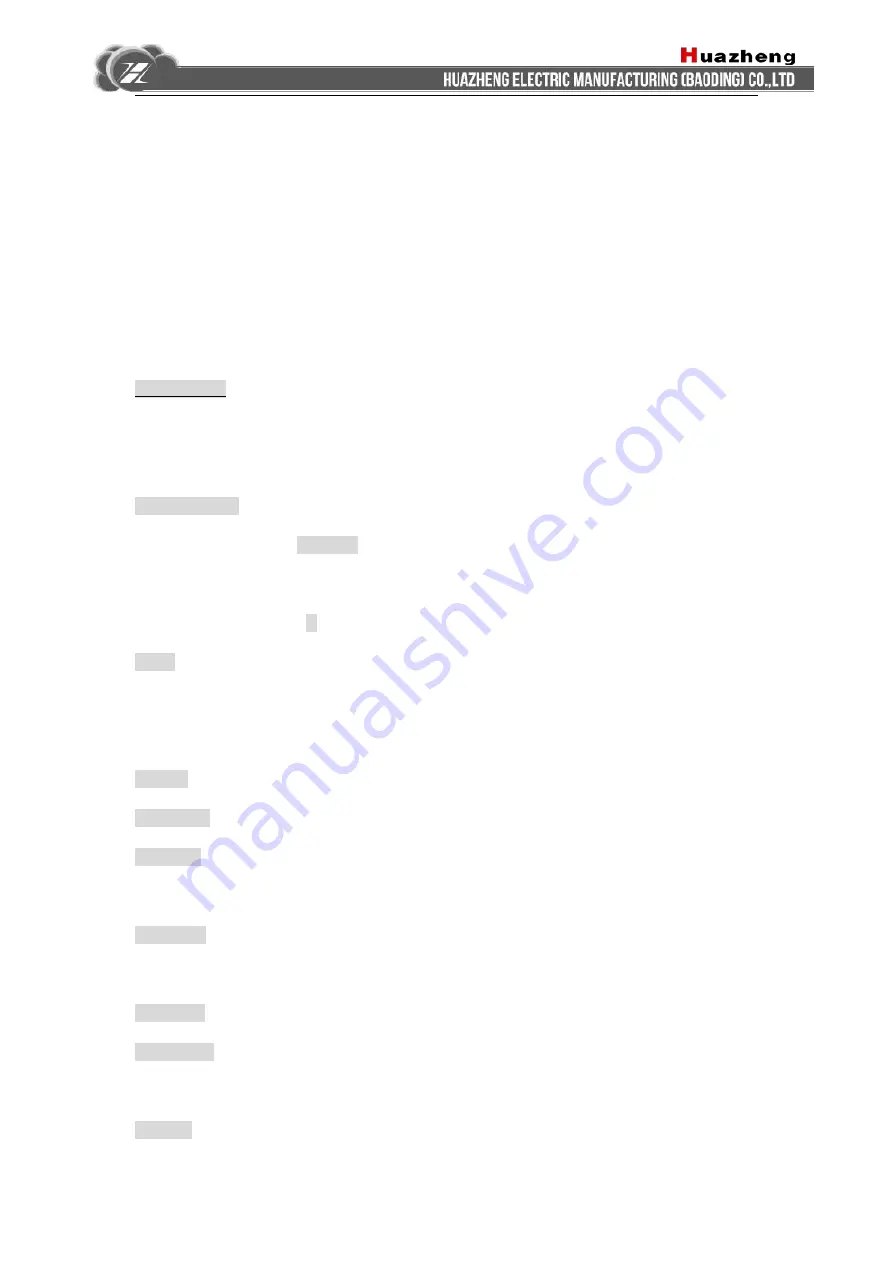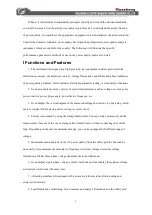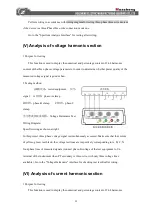
8
(II) Keyboard
There are 30 keys on the keyboard, namely: switch, storage, query, set, ↑, ↓, ←, → , quit,
self-checking , help, figure 1, figure 2 (ABC), figure 3 (DEF), figure 4 (GHI), figure 5 (JKL),
figure 6 (MNO), figure 7 (PQRS), figure 8 (TUV), figure 9 (WXYZ), figure 0, the decimal point,
#, auxiliary functions button F1, F2, F3, F4, F5.
Each key function as follows:
Switching key: It is used to control power of the instrument on and off. Usage : On - press this
button and then release; Off - press and hold this button for 2 seconds (the center of the screen will
display "System Shutdown"), then release.
↑, ↓, ←, → keys: Moves the cursor; It is used to move the cursor in the main menu to point to a
function menu, and press Enter key to enter the corresponding function; Up and down keys are
used to switching current option, and left and right keys are to change the value in the parameter
setting screen. In addition, ↓ can also be used to display the subdirectory menu.
Key: Enter key; Press this button to display the subdirectory menu in the main menu. Press this
key to enter the selected function in the subdirectory menu. In addition, this button is to start and
end input when you input certain parameters.
Exit key: Return key, press this key and it goes directly back to the main menu.
Storage key: It is used to store the results as records.
Query key: Pressing this key in the main menu will directly lead you to the <Disk Consult>
function screen.
Setting key: Pressing this key in the main menu will directly lead you to the <Parameter Setting>
function screen.
Toggle key: Reserved function, not available.
Self-test key: It is used for burning fonts during instrument debugging process, which is of no use
for users.
Help key: Pressing this key in the main menu will directly lead you to the <Help File> function











































